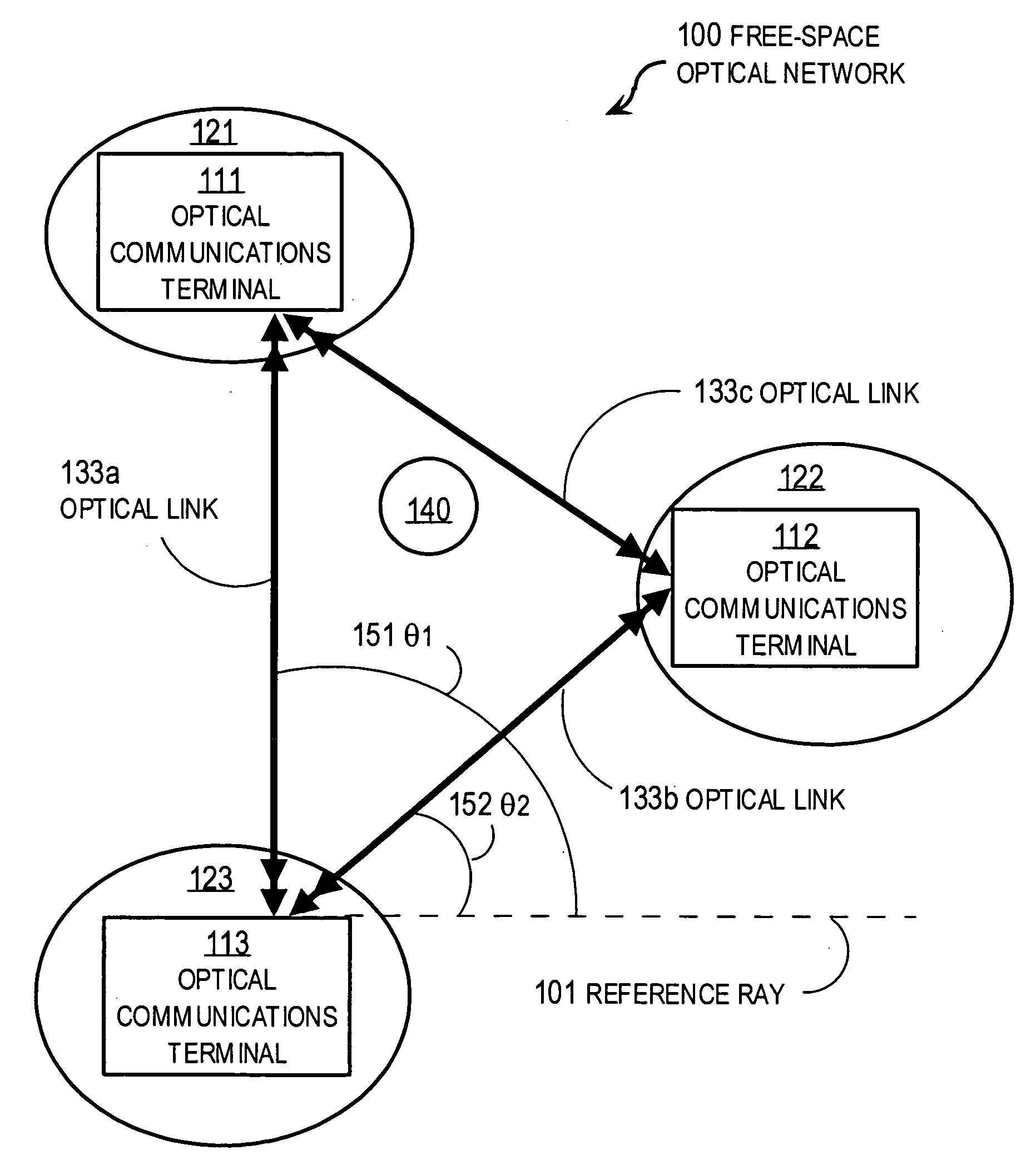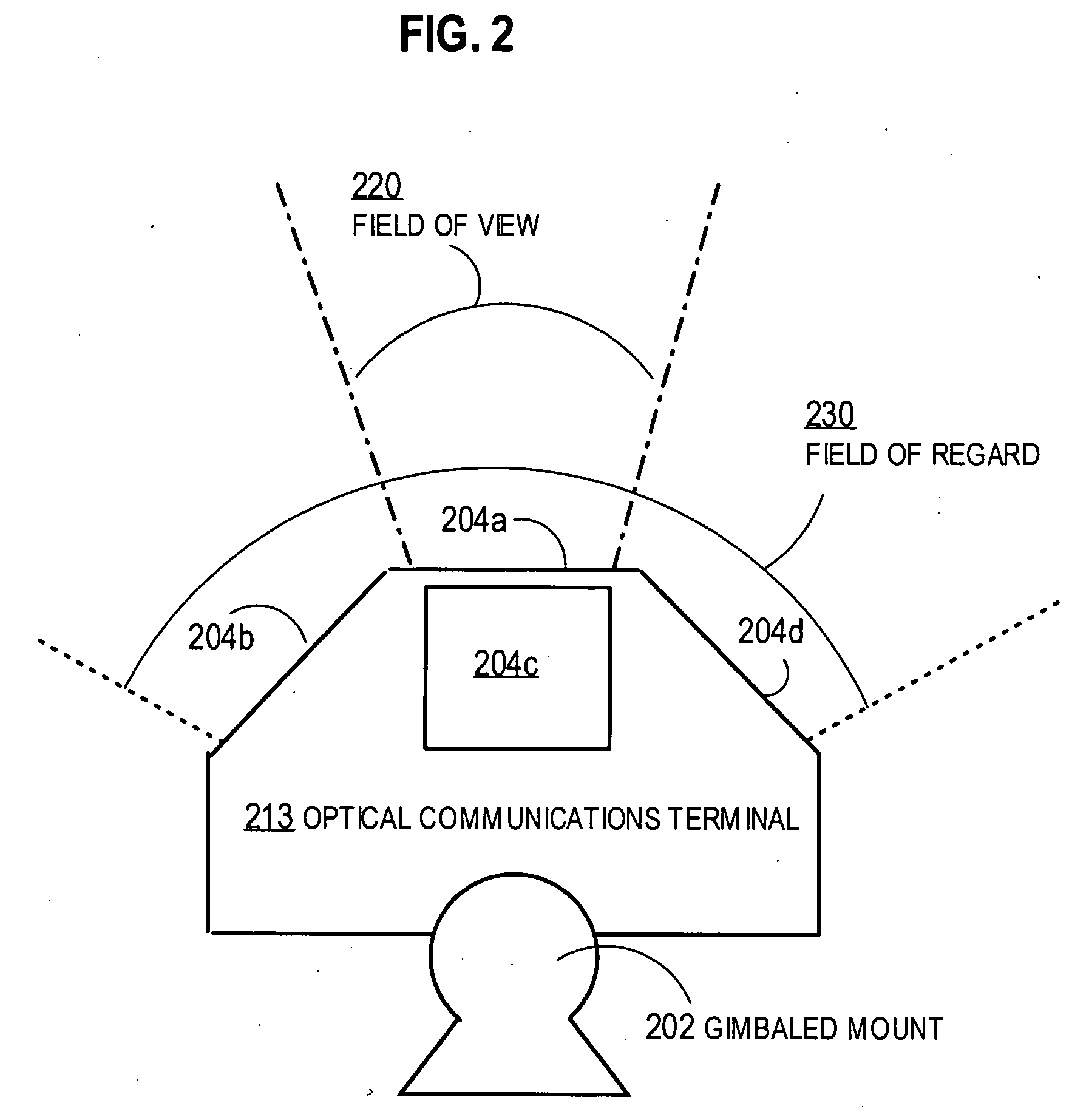Techniques for secure free space laser communications
- Summary
- Abstract
- Description
- Claims
- Application Information
AI Technical Summary
Problems solved by technology
Method used
Image
Examples
Embodiment Construction
[0069] FIG. 5B is a block diagram that illustrates an apparatus 501 for independently steering multiple optical links with micro-mechanical mirrors, according to a more detailed embodiment. Apparatus 501 may be used in a terminal for free-space optical communications and includes a multi-channel transceiver board 510 for optical communication, a multi-channel steering board 530 for steering free-space optical beams, and telescopic optics 550. As in FIG. 5A, electrical connections are indicated by thin lines without arrowheads, optical paths are indicated by thick lines with arrowheads indicating the direction or directions of propagation. Free-space optical paths are indicated by double arrowheads, while optical paths in optical waveguides are indicated by single arrowheads. In the illustrated embodiment, four optical communications channels arranged along one dimension are illustrated; and each channel makes use of several optical components that are individually well known in the ...
PUM
 Login to View More
Login to View More Abstract
Description
Claims
Application Information
 Login to View More
Login to View More - R&D
- Intellectual Property
- Life Sciences
- Materials
- Tech Scout
- Unparalleled Data Quality
- Higher Quality Content
- 60% Fewer Hallucinations
Browse by: Latest US Patents, China's latest patents, Technical Efficacy Thesaurus, Application Domain, Technology Topic, Popular Technical Reports.
© 2025 PatSnap. All rights reserved.Legal|Privacy policy|Modern Slavery Act Transparency Statement|Sitemap|About US| Contact US: help@patsnap.com



